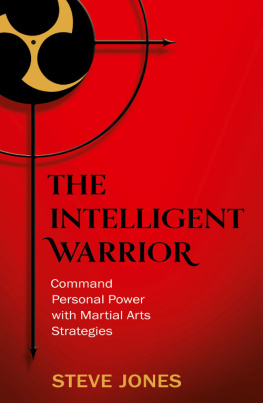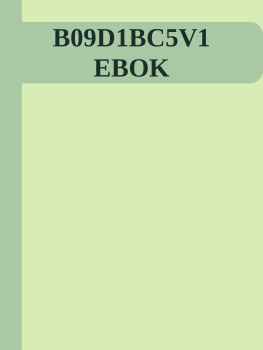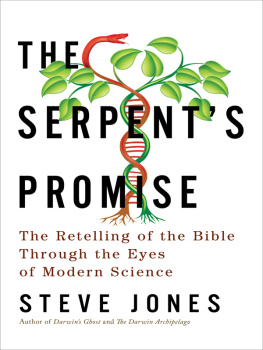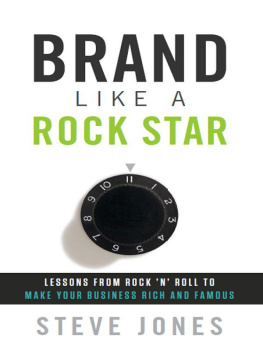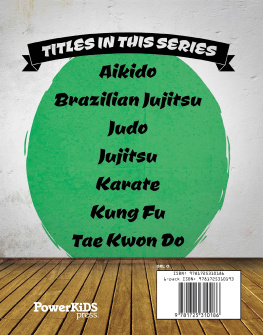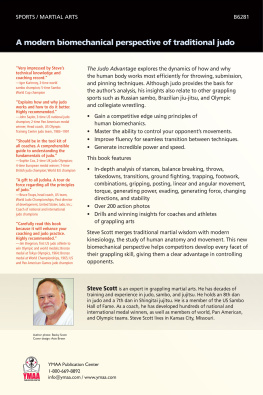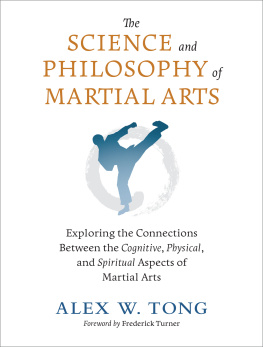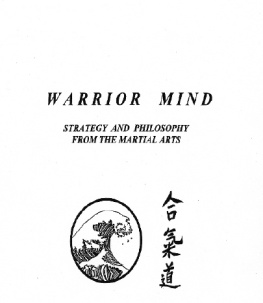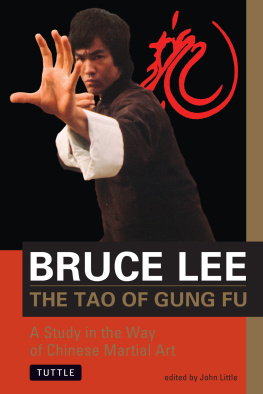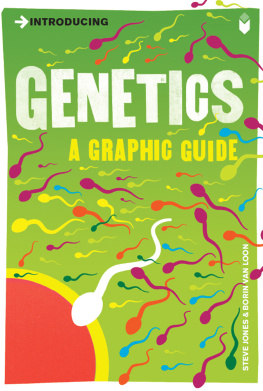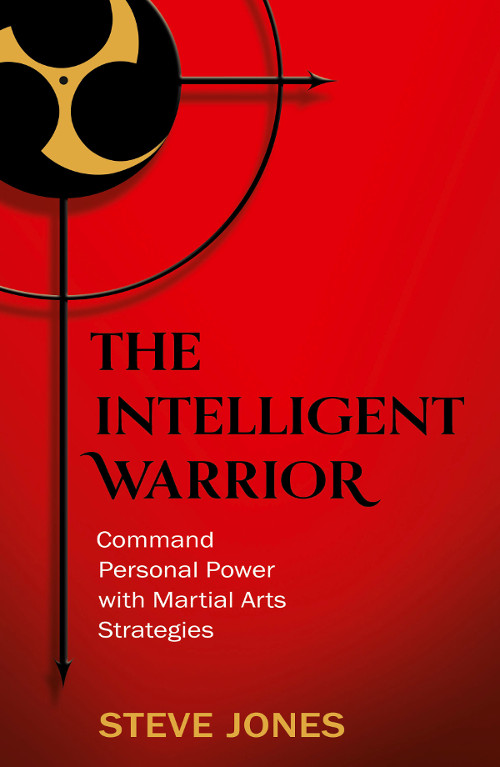Contents
I would like to thank the following for their help and support in the writing of this book: Susanna Abbot and the team at Thorsons, Michael Alcock, my mother and father, Master Sun Li, all those who have and who continue to study and train with me, Bruce Thomas, Grant Headley, The Gurdjieff Society, and a special thank you to Ria Holzerlandt and Dr Norman Jones.
This book is dedicated to the late Master Derek Jones
T he purpose of this book is to provide a practical guide to using Martial Art strategies in everyday life; it aims to provide you with the necessary tools to analyse and transform areas in your life where fear and its related emotions operate. Central to the book is the concept of holistic self-defence, which is founded upon the principle that the primary form of intelligence to be applied to fear is ones sense of balance.
This book will also challenge many preconceived notions of what defines Martial Art. I examine many of the concepts and philosophies that comprise Martial Art and apply old wisdom to contemporary settings. I have personally found that the Chinese tradition (mainly derived from Taoism) is the closest in essence to true Martial Art and for this reason I have based the book primarily upon Chinese perspectives and spiritual backgrounds; however, this by no means excludes other cultural interpretations, nor is it meant to depreciate their teachings.
Having spent over 22 years studying Martial Art, I feel that its true roots and its place in our daily lives has been overlooked and, to a certain extent, forgotten. In the last 30 years, Martial Art has enjoyed an explosion of popularity and although popularity is generally a good thing, it has engendered a variety of erroneous perceptions and interpretations of what constitutes Martial Art. The need for an ego massage and the lure of easy money have led to the emergence of many an unscrupulous and misguided teacher, and the mass-media marketing of Martial Art has further confounded the problem by creating fantastic images and staging fight scenes that bear no resemblance to reality. All of this has brought the world of Martial Art to a crisis point what was once a noble and valid path for self-evolution has become a vehicle for people seeking their own materialistic and egotistic ends. However, this is not all encompassing as I have met many good and true martial artists in my time who are distinguished from their inferior counterparts by the quality of their being and not their chosen Martial Art style.
How to Approach This Book
This book should be used as a working manual that can be dipped into on a daily basis, acting as a reminder and general guide to those of you who are searching for the martial way. It is also a good idea to read it from cover to cover to get an overall picture of what the study of Martial Art should include.
I am using this book to present Martial Art to you as a tool and, like all tools, it will only be meaningful to you when you use it practically in your life. This does not require you to go out and start conflicts in order to fulfil your training. In fact, the truth of conflict and its associated fears is that it is a part of everyday life that we are continually affected by we are often attacked from within by our own negative thoughts and attitudes towards ourselves; conflicts arise between people who love each other; fear exists between people who work together; people, whether consciously or unconsciously, send negative thoughts or vibes; and there is always a possibility of physical intimidation which, while relatively rare in most people's lives, is increasing in all our lives all the time. If you embrace the fact that attack in some form is integral to our lives, then you will start to see our training from a much wider perspective. By the time you have finished reading this book you should have gained an understanding of the nature and effects of fear in your life. Moreover, you will have a good understanding of the strategies that could be employed to overcome the debilitating effects of fear and aggression.
If I appear to repeat myself during the course of this book, it is because some points need to be reiterated before their significance can be realized. The process of conscious repetition is essential to Martial Art, for it is only by repeating carefully (practising) a particular move or aspect, that your body, mind and spirit can begin to embody the underlying principles. It is because of this that delving deeply into the spiritual ramifications of this kind of work is beyond the scope of this book. It can take you to that door, but it will not open it very far. This is primarily because a very thorough grounding in the physical and practical aspects is needed before we can truly experience the spiritual benefits of Martial Art.
You are reading these words now for a reason; perhaps this book caught your eye on a bookshops shelf, perhaps somebody gave it to you because they felt that it could help you with particular situations that you are experiencing. Whatever the reason, it is important that before you start grappling with the ideas and concepts in this book, you are clear, as much as possible, why you are interested in the martial path and what you wish to gain from studying it. The true martial path is not a particularly easy one since it will ask you to face things in yourself that you would perhaps wish to keep in the dark, and it demands that you slowly bring your ego into perspective and allow a more human being to take control of your life. This process requires you to be open to the relationship that exists in you with the things that part of you would most like to avoid, namely areas where pain and fear operate. Because of this fact, there will be times when you meet great resistance in yourself to forging ahead and keeping the process going. Remember that you are investing your energy and attention back into yourself and by so doing strengthening yourself at the very core of your being, thereby becoming more effective, stronger and able to meet all that life demands of you. This is the real meaning and purpose of Kung Fu: to provide a tool that you can use to deal with your daily battles, whether they be against violent attacks of a criminal nature, abusive bosses, partners, strangers, or negative thoughts and attitudes within you, or perhaps just to fight for what you want out of life and to deal with the many failures it takes to make a success. Nothing that is worth anything in life comes cheaply or easily. Conflict is an inescapable part of life and always carries with it a good helping of fear and pain; it arises in our life in many different places, some suspected, some unsuspected, and awareness of the possibility of conflict is your first line of defence. If we can keep our original motivations and wishes alive, we can return to the source of our enquiry into Martial Art and strengthen once again our wish to evolve by facing our fears.
Some Preliminary Information
A Brief History of Kung Fu
As this book aims to interpret some of the original Martial Art precepts into contemporary life it would serve us well to briefly look at the roots of Kung Fu (a modern term generally describing Martial Art), for it is only by looking at its origins that we can begin to understand what its original purpose may have been. The Kung Fu tradition has a Chinese background and is inextricably linked with the spiritual teachings of Taoism. Central to the teaching of Taoism is the concept of the individual practitioner evolving a gradual harmonization with nature and the Tao (the life force that animates all things and can be found everywhere in the universe), and this is important because since its conception it has been clear that Kung Fu is about harmonization rather than domination.

